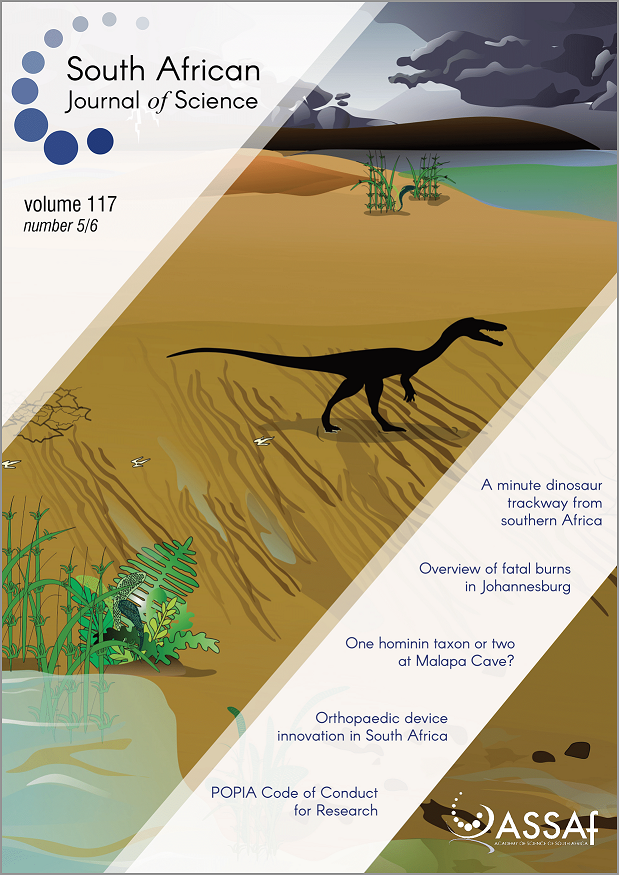Impacts of soil carbon on hydrological responses – a sensitivity study of scenarios across diverse climatic zones in South Africa
DOI:
https://doi.org/10.17159/sajs.2021/8118Keywords:
organic matter, impact on hydrology, soil water holding capacity, hydrological modellingAbstract
Soil organic carbon (SOC) content and the water holding capacity of soils are two properties which link the carbon and hydrological cycles. Hydrological model inputs seldom include soil carbon as a parameter even though soil carbon content is known to influence soil water retention capacities. This study is a sensitivity analysis of changes in hydrological responses when the model inputs include different soil carbon percentages for the topsoil horizon. Sensitivities of hydrological responses such as transpiration, runoff volumes, the stormflow component of runoff and extreme runoff events to SOC content were quantified under various climatic conditions in South Africa. The soil water holding capacities at the drained upper limit (i.e. field capacity), permanent wilting point and saturation were calculated for the topsoil horizon, using SOC dependent pedo (soil)-transfer functions for different soil carbon scenarios and locations in South Africa. These variables, together with other pre-determined soil- and locationrelated inputs, as well as 50 years of daily climate, were then used as inputs in a process-based hydrological model. Overall, it was found that increased SOC content in the topsoil horizon leads to an increase in transpiration, a reduction in runoff, especially in its stormflow component, and a reduction of extreme runoff events. However, these changes are relatively small compared to the influence of climate, particularly of rainfall amount and distribution.
Significance:
- Organic carbon content of the soil and the water holding capacity of soils link the carbon and hydrological cycles.
- Management interventions that increase SOC lead to win-win situations because, in addition to climate change mitigation, plant water availability improves, and overall surface runoff ‘flashiness’ becomes more regulated.
- While rainfall amount and distribution over space and time remain the most critical determinants of hydrological responses, increased SOC in the topsoil horizon leads to increases in transpiration and thus plant growth, and to a reduction in runoff, especially in its stormflow component, and hence to a small reduction of severe flooding events.
Published
Issue
Section
License

All articles are published under a Creative Commons Attribution 4.0 International Licence
Copyright is retained by the authors. Readers are welcome to reproduce, share and adapt the content without permission provided the source is attributed.
Disclaimer: The publisher and editors accept no responsibility for statements made by the authors
How to Cite
- Abstract 810
- PDF 582
- EPUB 140
- XML 199












.png)